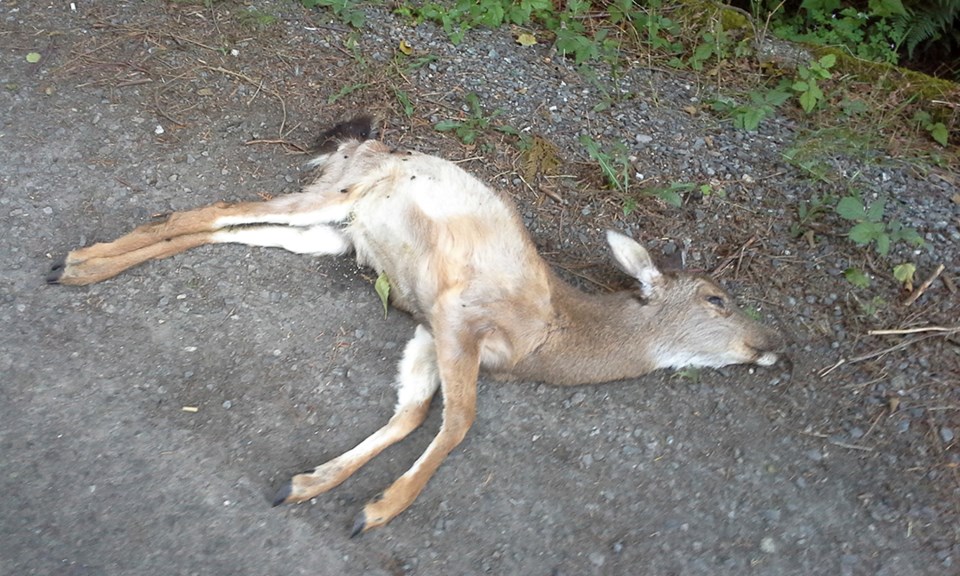This is the time of the year when the next generation of deer emerge into the world. It is also the time of year, sadly, when we see more dead deer beside the road, fatally struck by vehicles.
I saw my first deer road kill of 2015 yesterday, at the side of Mount Gardner Road near my home — a yearling doe, who often walked through my yard with a yearling buck, probably her brother.
The new generation of mule deer fawns are usually born in June and for the first few weeks they stay hidden in the undergrowth, camouflaged by their spotted hides, while the mother goes off to forage. The newborns are well adapted to being left on their own: they have no smell and they stay absolutely still. This reduces the chances of predators finding them.
If you find a baby fawn, please leave her be. The doe will be back before long. Try not to disturb her and do what you can to keep dogs away. We dog-owners need to make a special effort to keep our dogs leashed, yes, even our small, mild-mannered dogs who “wouldn’t hurt a thing”.
Before very long, we will see the fawns at the side of the road as they start to graze alongside their mothers. It takes them a little time to get world-wise and traffic-wise, so we drivers all need to exercise extra caution for the next couple of months, especially at known deer crossings and especially at dusk. Many of the regular deer crossings are marked by municipal signage. One of the busiest is on the cross-island road, in the S bend between the building centre and the garden centre. That’s a good place to watch your speed and to be extra vigilant for deer. There are plenty on Miller Road, too. And it’s good to remember that the deer move around in family groups of mothers and offspring, so if you see one deer, there are usually others nearby.
Remember, too, that a deer running beside the car can dart out unpredictably in front of your car. I once saw a driver pelting along Mount Gardner Road, chasing a deer along the road. I will never forget the bellowing sound the deer was making in its terror.
Mule deer can run up to 40 kilometres per hour. They have evolved that way over centuries. That speed is designed to allow them to escape from most of their natural predators. But cars and trucks are not natural predators. Our Bowen Island speed limit of 40 kilometres per hour should give a deer some chance to get out of the way, but if you are exceeding the speed limit, the deer will have no chance, and you will have a dead or damaged deer on the road, or through your windshield.
If you see an injured deer or are unlucky enough to strike one, Bowen Vet Services can help: please call 604-947-9247 or 604-806-2244 (24 hours), anonymously if need be. Some injured deer can be treated and transferred to the Wildlife rehabilitation facility in Burnaby. And a dying deer can be euthanized by the vet to spare those hours or days of needless suffering. It’s the humane thing to do.



